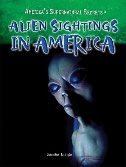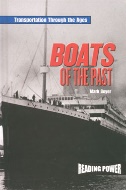-
 This book will give students an understanding of the history of flight right up to the technology and scientific discoveries that allow us to fly planes as large as todays super jumbo jets. How are airplanes designed so they can operate safely? What is the future of flight? All of these questions and more will be answered as students take a look at super jumbo jets, inside and out!
This book will give students an understanding of the history of flight right up to the technology and scientific discoveries that allow us to fly planes as large as todays super jumbo jets. How are airplanes designed so they can operate safely? What is the future of flight? All of these questions and more will be answered as students take a look at super jumbo jets, inside and out! -
 This is a well-organized look as coastal regions: what shapes them, some environmental threats, and their usefulness in industry and tourism. Several beautiful and interesting coastlines are highlighted, including Cancun and the Great Barrier Reef. Readers will learn about each coastline's location, population, local industries, and environmental threats.
This is a well-organized look as coastal regions: what shapes them, some environmental threats, and their usefulness in industry and tourism. Several beautiful and interesting coastlines are highlighted, including Cancun and the Great Barrier Reef. Readers will learn about each coastline's location, population, local industries, and environmental threats. -
 Some of the most important contributors to the food chain are those creatures that help break things down: decomposers. If not for these birds, bugs, and worms organic matter couldn't be recycled back into nature. Readers will discover the different kinds of decomposers, how they do their job, and why it is so important. This fascinating book includes graphic organizers and annotated illustrations to better explain the food chain.
Some of the most important contributors to the food chain are those creatures that help break things down: decomposers. If not for these birds, bugs, and worms organic matter couldn't be recycled back into nature. Readers will discover the different kinds of decomposers, how they do their job, and why it is so important. This fascinating book includes graphic organizers and annotated illustrations to better explain the food chain. -
 Aircraft carriers are truly the fortresses of the sea! Students will get an inside-out view of these incredible floating cities, from how they are constructed to how they function as important parts of a country's defense. Students also will learn about the various aircraft that are on board and the crew that keeps aircraft carriers in ship shape!
Aircraft carriers are truly the fortresses of the sea! Students will get an inside-out view of these incredible floating cities, from how they are constructed to how they function as important parts of a country's defense. Students also will learn about the various aircraft that are on board and the crew that keeps aircraft carriers in ship shape! -
 In 1878 in Denison, Texas, a man named John Martin looked up into the sky and saw something he could not explain. Americans have been hooked on the possibility of beings from space visiting Earth ever since. A sense of wonder, and reality, are brought to some popular legends of alien encounters and sightings in this volume. The final chapter explores how these legends have become even more popular thanks to movies, television, and literature.
In 1878 in Denison, Texas, a man named John Martin looked up into the sky and saw something he could not explain. Americans have been hooked on the possibility of beings from space visiting Earth ever since. A sense of wonder, and reality, are brought to some popular legends of alien encounters and sightings in this volume. The final chapter explores how these legends have become even more popular thanks to movies, television, and literature.

























































